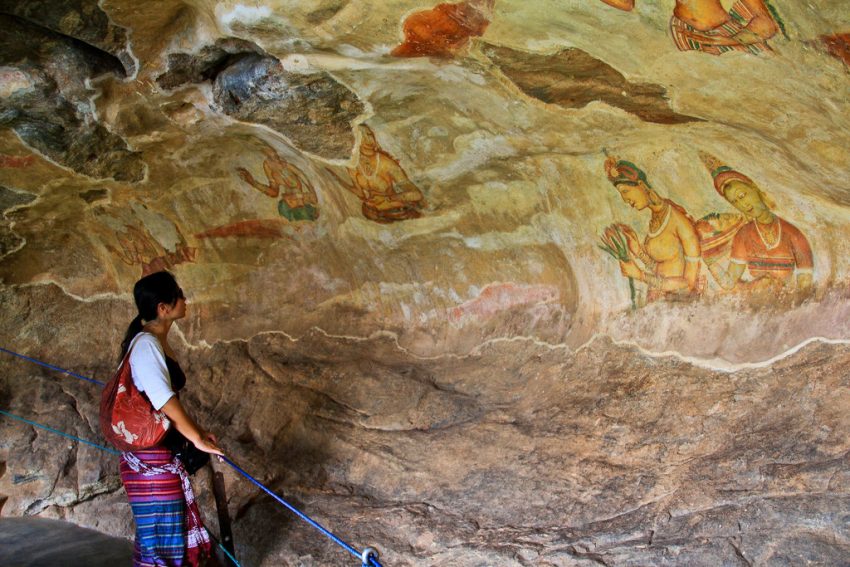Sigiriya, often referred to as the “Lion’s Rock,” is a striking ancient fortress located in the central part of Sri Lanka’s Cultural Triangle. This UNESCO World Heritage Site is renowned for its impressive architecture, vibrant frescoes, and panoramic views, making it one of Sri Lanka’s most iconic landmarks.

Historical Significance: Sigiriya was built during the 5th century AD by King Kasyapa I, who ascended the throne after a violent power struggle. The king transformed the site into a grand citadel and royal residence, strategically positioning it atop a massive rock outcrop. Sigiriya served as a fortified palace and stronghold, showcasing the king’s architectural and artistic ambitions.


Frescoes: The frescoes of Sigiriya are one of its most famous features. These vibrant murals, located in a sheltered area known as the “Cave of the Frescoes,” depict celestial maidens and elaborate scenes. They are considered masterpieces of ancient Sri Lankan art and provide a glimpse into the aesthetics and cultural symbolism of the period.

Summit Views: At the top of the rock, visitors are rewarded with breathtaking panoramic views of the surrounding landscape. The summit area includes the remains of the royal palace, with its impressive foundations and terraces offering a glimpse into the opulent lifestyle of the ancient rulers.

Buddhist Influence: While Sigiriya is primarily known for its role as a royal fortress, it also reflects the influence of Buddhism in its design and artistic elements. The site’s development reflects a blend of secular and religious influences.

Cultural Significance: Sigiriya is not only a historical site but also a symbol of Sri Lanka’s rich cultural heritage. It represents the ingenuity and artistic prowess of ancient Sri Lankan civilization and continues to attract scholars, tourists, and pilgrims.




Sigiriya offers a captivating journey into Sri Lanka’s ancient past, with its awe-inspiring rock fortress, intricate frescoes, and stunning views. The site stands as a monumental example of ancient Sri Lankan architecture and artistry, making it a must-visit destination for anyone interested in the island’s rich cultural heritage.
This is the official website of the Ministry of Tourism, Republic of Indonesia. The contents listed on this website are intended for informational purposes rather than commercial. Any displayed sale is meant as a token of partnership and will always redirect you to our partners’ sites.